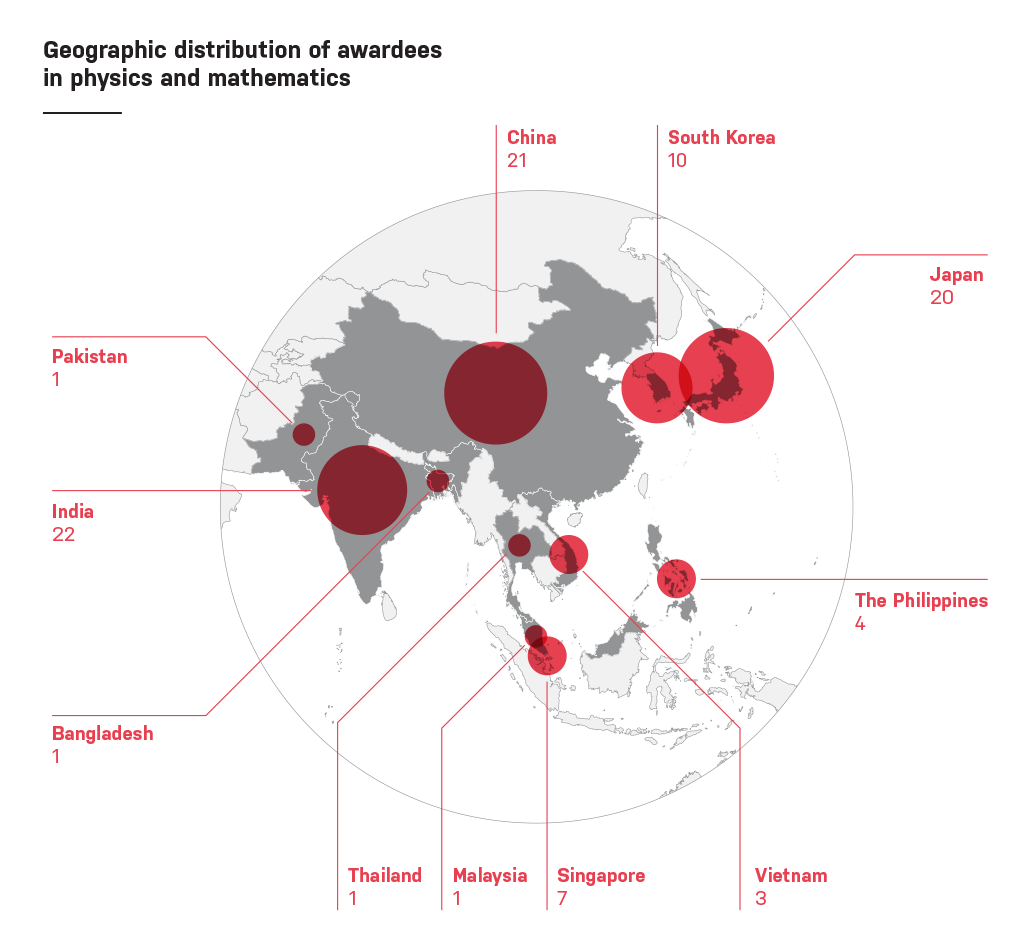[ad_1]
AsianScientist (Jun. 9, 2021) – So rich are Asia’s traditions of physics and mathematics that their achievements have become clichés: the compass as one of China’s Four Great Inventions; the number zero among other Indian contributions to numerology; or the disparate efforts to map the cosmos, from the Buddhists on the Tibetan plateau to the maritime navigators of the ancient Malay world.
Lesser known is the influence of Asia’s ancient belief systems on some of the pioneers in quantum physics.
While Hindu scriptures touched both Albert Einstein and Arthur Schrödinger, perhaps the most seminal cross-cultural impact was the Chinese notion of Tao on Niels Bohr, who proposed the Complementarity Principle, which states that objects have certain pairs of complementary properties which cannot all be observed or measured simultaneously, a key tenet of quantum mechanics.
Bohr’s coat of arms, which he designed upon receiving a Danish knighthood in 1947, features the Taoist Yin-Yang symbol alongside the Latin words Contraria sunt complementa, which means opposites are complementary.
In keeping with the wisdom of its sages, it is perhaps unsurprising that China today is a world leader in quantum physics. For its rapid recent progress in the field, many credit the close coordination between government, academia and industry. For instance, China Shipbuilding Industry Corporation, a large state-owned enterprise, has set up a lab at the University of Science and Technology of China (USTC), what some call ‘China’s Caltech.’
Meanwhile, private firms such as technology giants Alibaba and Baidu are investing heavily in quantum computing. China is currently building a US$10 billion National Laboratory for Quantum Information Sciences in Hefei, Anhui province.
Pan Jianwei, a professor at USTC whom some call ‘The Father of Quantum,’ is spearheading many of these efforts. Pan led the launch of Micius, China’s first quantum satellite, which in 2017 facilitated an unhackable video chat between Beijing and Vienna. Micius did so by beaming encryption keys encoded in photons in a quantum state—a state that by definition would be disturbed by any attempt to observe or intercept it.
Japan has long been a pioneer in supercomputer development. Its current research efforts are geared towards improving the energy efficiency of these power-hungry monsters; while deploying their capabilities towards addressing societal problems such as an aging demographic, disaster risks, energy use and low productivity.
Not to be outdone, India’s first quantum optics lab is helmed by Urbasi Sinha, an associate professor at the Raman Research Institute. Her research focuses on, among other things, ‘tripleslit’ experiments to create three-dimensional qudits called qutrits.
Unlike the better-known quantum bits or qubits, which have two basis states, qutrits have three basis states. A quantum computer running on qutrits (three states) requires fewer individual bits than one on qubits (two states)—thus improving its stability.
Sinha’s lab is also collaborating with the Indian Space Research Organisation on India’s first satellite-based quantum communication project. This is part of a much broader contemporary space race in Asia, catalyzed by its three established space powers, China, India and Japan.
Their wide-ranging goals span socioeconomic and telecommunications development to national security amid geopolitical competition. In 2011, China launched its first space laboratory into orbit while in 2014, India’s successful Mars Orbiter Mission gave it the distinction of being the first country ever to reach the red planet on its first try.
Other Asian countries who are relative newcomers to space include Indonesia, Malaysia, Thailand and Vietnam. Their more prosaic goals include exploiting the burgeoning market for space services.
Other notable contemporary achievements in this field include the discovery of nihonium or element 113, by a team led by Kosuke Morita, associate chief scientist of the Superheavy Element Laboratory at the RIKEN Nishina Center for Accelerator-based Science in Japan.
Superheavy elements like nihonium do not occur naturally. They are synthesized in nuclear reactors or particle accelerators via nuclear fusion or neutron absorption. Nihonium was produced by slamming lighter nuclei into each other and tracking the subsequent decay of radioactive superheavy elements.
Morita’s team used a linear accelerator and a novel nuclei separator, called the gas-filled recoil separator, to synthesize nihonium. It took more than four trillion collisions over nine years to successfully make element 113 just three times.
During that time, whenever Morita visited a Shinto shrine, he made an offering of precisely 113 yen (about a dollar). It is a reminder that even as Asia’s leading physicists make discoveries at the sub-atomic and intergalactic level, they retain a reverence for mysticism that they might never fathom.
Learn about other exciting developments in physics and beyond by downloading the Five Years Of The Asian Scientist 100 white paper here.
———
Copyright: Asian Scientist Magazine; Illustrations: Oi Keat Lam/Asian Scientist Magazine.
Disclaimer: This article does not necessarily reflect the views of AsianScientist or its staff.
[ad_2]
Source link